1521+ Businesses Have Used Comparesoft to Shortlist EAM Software
IFS EAM
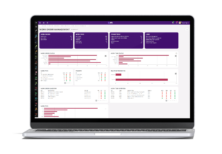
IFS EAM is easy to use and hence is well adopted in complex and asset-intensive industries. IFS EAM easily consolidates all information for all asset types across their entire asset lifecycle. Also it includes embedded health and performance management capabilities.
IFS EAM is a part of IFS Cloud, a singular platform that consolidates ERP, EAM, service provision, enterprise service management and customer experience management.
Industries: Aerospace, Defense and Security, Energy, Engineering, Construction and Operations, Logistics and Distribution, Manufacturing, Oil and Gas, Telecommunications and Utilities
10,000+ Customers
Implementation Time: 6 Months
Infor EAM
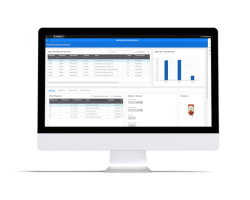
Infor EAM (Now Hexagon EAM) is a scalable and high impact EAM tool for asset heavy industries. It is available in a range of industry-specific configurations.
It can be extended via integrations with other Infor and non-Infor solutions, including asset and fleet tracking systems, IoT condition monitoring technology, supply chain orchestration applications, and ERP/accounting tools. Infor EAM makes data from diverse sources accessible to non-technical users and is built on AWS infrastructure.
Industries: Manufacturing, Pharma, Energy, Utilities, Oil and Gas, Engineering, Construction and Operations, Logistics, Distribution and Transportation.
65,000+ Customers
Implementation Time: 90 Day Implementations Using a 60-30-10 Approach
Hitachi EAM
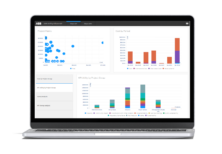
Lumada is an industrial-hardware-agnostic product suite designed to maximise the uptime of mission critical assets. Its modern, modular architecture allows customers to select the most appropriate functionality and build a tailored solution capable of:
Enterprise asset management
Asset performance management
Field service management
Hitachi EAM is available in two variants – Ellipse EAM and Asset Suite EAM.
Industries: Energy, Utilities, Oil, Gas, Telecommunications, Infrastructure, Rail Operators, Industrial Machinery, Components, Nuclear Mining and Metals
1000+ Customers
Implementation Time: 3 Months to 1 Year
Ultimo EAM
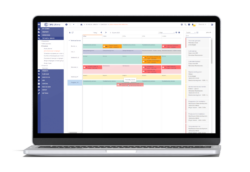
IFS Ultimo is a cloud-based solution designed for asset, project, facility and plant lifecycle management. It consolidates maintenance, operations and HSE processes and integrates with any third-party system, application or tool. IFS Ultimo supports specialised asset types—such as infrastructure, medical and fleet—as well as multi-lingual, multi-currency and multi-timezone operations.
Industries: Manufacturing, Chemicals, Energy, Utilities, Healthcare, Logistics, Distribution, Capital Projects and Infrastructure
2,000+ Customers
Implementation Time: 4 Weeks to 3 Months
Fiix
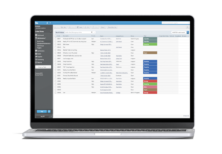
Fiix is a cloud-based EAM solution designed for equipment-intensive organisations in production and reliability-focused industries. It includes an AI-powered analysis engine that provides bespoke recommendations for asset, parts and maintenance management. Fiix is backed by Rockwell Automation and comes with a library of pre-built integrations for third-party production and business systems.
Industries: Manufacturing, Industrial Machinery, Components, Oil, Gas, Utilities, Wholesale B2B, Retail, Logistics, Distribution, Engineering, Construction and Operations
3,000+ Customers
Implementation Time: 24 Hours to 3 Months
PEMAC
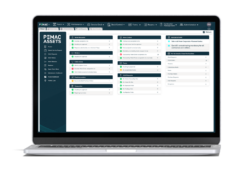
PEMAC ASSETS is a maintenance management solution ideal for use in compliance-intensive industries. It digitises strict maintenance processes, enhances compliance and audit readiness, and provides real-time visibility into key asset, maintenance and workforce metrics. PEMAC ASSETS is a modular solution and includes dedicated maintenance, MRO, asset performance, compliance and calibration modules.
Industries: Laboratory, Life Sciences, Food, Beverages, Oil, Gas, Energy, Utilities, Chemicals, Medical Supplies and Equipment Manufacturing
160+ Customers
Implementation Time: 7 Days to 3 Months
Spidex
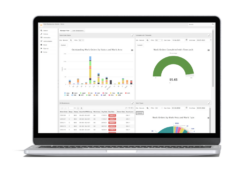
Mainsaver by Spidex is a maintenance management solution that excels at complex multi-site or large scale maintenance operations. It includes configurable, embedded health and safety features and can be integrated into critical business systems, such as ERPs. Mainsaver can be deployed on-premise or via cloud.
Industries: Manufacturing, Chemicals, Pharma, Automotive, Waste Management, Food and Beverages
1,000+ Customers
Implementation Time: 4 Weeks to 3 Months
MaintMaster
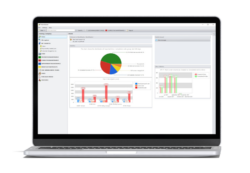
MaintMaster is a cloud-based asset and maintenance management solution designed for unassisted, continuous adaptation by its users. It includes out-of-the-box compatibility with a range of compliance standards (e.g. European Norms, BSI PAS 55), and it is available with no upfront cost for a single monthly fee that includes software, implementation, training and support. MaintMaster’s in-house, fixed cost IoT sensors enable condition-based maintenance initiatives to be rapidly integrated with established maintenance protocols.
Industries: Packaging, Containers, Waste Management, Energy, Utilities, Food, Beverages, Manufacturing, Engineering, Construction, Operations, Logistics and Distribution
500+ Customers
Implementation Time: 4 Weeks to 3 Months
IBM
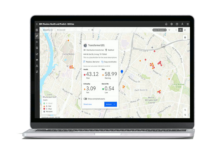
IBM Maximo is a modular EAM solution with multiple deployment models. It is a highly configurable, centralised system that uses machine learning technology and advanced analytical tools to improve operations in asset-intensive industries.
Industries: Energy, Utilities, Oil, Gas, Manufacturing, Transportation, Engineering, Construction, Operations, Capital Projects and Infrastructure
100,000+ Customers
Implementation Time: 4 Weeks to 3 Months
Asset Handling
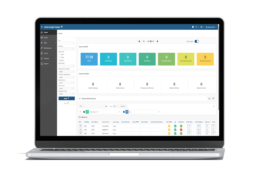
Asset Insight Manager (AIM) is an EAM solution for Oil and Gas and energy industries. It supports the targeted deployment of condition monitoring and predictive maintenance capabilities and includes integrated program and project management. AIM digitises complicated risk and compliance management processes and comes with customisable maintenance regime templates.
Industries: Manufacturing, Chemicals, Oil, Gas, Healthcare, Energy, Utilities, Engineering, Construction, Operations, Capital Projects and Infrastructure
10+ Customers
Implementation Time: 4 Weeks to 3 Months
A Buyer's Guide For Finding the Best Enterprise Asset Management (EAM) Software

EAM Software solutions are typically utilised by industries that rely heavily on the use and availability of their physical assets. The overall goal of deploying an EAM system is to control and measure asset performance. By doing so, businesses can maximise asset usability, reduce expenses, improve maintenance processes, and enhance the overall quality and efficiency of their workflow. In this guide to Enterprise Asset Management software, we’ll cover:
- What Is EAM Software?
- Benefits of Using EAM Software
- Typical features of EAM Software
- Considerations when choosing Enterprise Asset Management Software
What Is EAM Software?
An enterprise asset management system provides clarity on asset status, asset workflows and asset operators. From a technical perspective, an EAM software maintains an accurate asset register and its correlations with asset movements.
Best EAM systems provide clarity of asset status and context of asset workflows. EAM as the name suggests is primarily used by asset intensive enterprise companies. Because often the uptime of enterprise assets directly impacts the survival and growth of the companies.
Typically, EAM Software is used to manage:
- Complex equipment and machinery.
- Manufacturing facilities.
- Office buildings.
- Road, Air and Sea Fleet.
Typical asset intensive industries that use an EAM software are;
- Automotive.
- Manufacturing.
- Mining.
- Energy Generation - Coal, Nuclear, Oil and Gas & Renewable energies.
- Energy Distribution - Physical traders, transporters and pipeline companies.
- Aerospace.
Generally EAM systems are implemented after the companies outgrow their CMMS systems or do not get enough flexibility from their ERP system. Often asset-intensive companies implement an EAM system to notch-up their asset management play.
Whilst CMMS and EAM systems are both focussed on asset uptime and maintenance. EAM Software take a holistic approach to asset maintenance. EAM software is designed to address every stage of an asset’s lifecycle. Generally the stages are;
- Asset planning
- Capital planning
- Asset purchase
- Deployment
- Active usage
- Asset management and tracking
- Work order management
- Asset analytics and reporting
- Purchasing and procurement management
- Labour and inventory management
- Downtime
- Shutdown and turnaround
- Asset disposal
Best EAM software tend to focus on software capabilities to record details of the assets as well as the workflows that get triggered based on status change of the assets. They use sensors, machine learning and manual intervention to understand asset’s condition and recommend uptime strategies based on threshold parameters from asset’s manufacturers and/or operating parameters defined by asset operators.
Best EAM tools offer asset register rigidity and workflow flexibility enabling asset-intensive organisations to drive their enterprise asset management.
9 Benefits of Implementing Best-of-Breed EAM Platforms
1. Effectively Manage a Diverse Range of Assets With Asset-Specific Plans
An EAM software is built from the ground up to manage a diverse range of assets - from capex heavy infrastructure assets, plant and machinery, and movable fleet assets to opex light furniture and fixtures.
Most Enterprise Asset Management Systems have the depth to cater to asset-specific plans. For example, you can define condition monitoring parameters for complex high-value machinery and time-based maintenance routines for low-value machinery.
Assets that are interlinked with complex processes like machinery in production processes, hygiene focussed assets in food manufacturing, on-the-ground and in-the-air assets like aviation fleets, bridges, car parks and a number of other complex [assets and processes] interlinked assets can be effectively managed with an EAM system.
2. Improve Your [Speed to Act on] Maintenance, Repair and Overhaul (MRO) Situations
Enterprise assets which typically have high CAPEX (Capital Expenditure) and OPEX (Operational Expenditure) require a combination of inspection, technician(s) assignment and maintenance/operations approval. The level of complexity for each of these areas varies based on the type of the asset and criticality of the maintenance situation.
Best EAM systems offer comprehensive features to manage your MRO and at the same time provide speed to act on critical unplanned maintenance situations.
3. Deliver Role-Specific Asset Insights for Execs, Managers, and Users
An EAM Software, if implemented and adopted effectively, can improve asset-specific communication within an organisation. Often, maintenance and operations teams find it tricky to communicate about their successes and secure budget approvals.
An EAM system can offer numbers-oriented insight for execs, execution-oriented insight for managers and tasks/jobs-driven insight for users. In effect, you can provide multiple perspectives of your asset plans and deliverables across different parts of your organisation.
4. Easily Build Correlations Between the Asset - Usage - Maintenance - Productivity - Outcomes Cycle
An asset goes through multiple phases in the short and long term. For example, on a weekly basis an asset may be at different locations, have peak and low usage periods, or have different users.
Other stages include audits, inspections, light maintenance schedules, shutdown and turn around, and high usage (non-maintenance) periods.
Asset, operations, and maintenance Leaders can easily develop actionable insights between different stages of an asset and hence derive more value from them.
5. Get a Single Source of Truth for All Your Asset-Related Information
Enterprise asset management is very complex - asset information is required from asset planning, budgets, asset installation, usage, maintenance and end-of-asset life stages.
Interlinked with these asset stages are changing stages of the business. Often spreadsheets, independent systems, ad hoc software decisions, and people coming in and leaving make it really difficult to take asset-oriented decisions quickly and effectively.
A new EAM system gives you the opportunity to reset and restart, and as a result, you get a single source of truth.
6. Easily Wire Your Hardware and Software Together to Deliver Transformational Enterprise Asset Management
Getting insight into your enterprise assets by extracting and combining asset performance data from a data historian, SCADA systems and sensors with an EAM Software is a powerful concept but very difficult to execute effectively.
From a technical standpoint, there are three layers to integrate for you to analyse sensor data;
- Physical layer that collects the data (this is predominantly a hardware layer)
- Cloud layer, where the data is collected and processed
- Service layer - This is a software component where users can access the software from mobile, tablet, laptop or desktops
Contemporary EAM systems are built to resolve and incorporate data compatibility issues from these three layers and present your EAM data with minimal errors.
7. Benefit From Templated & Bespoke Maintenance Plans that Are Based on Multiple Downtime Scenarios
Enterprise maintenance management requires multiple maintenance plans that can be tailored to different stages of the asset and multiple business cycles. For example; when a piece of equipment is new, an inspection and light maintenance schedule is more applicable than condition monitoring, as the equipment matures, condition and asset performance tracking takes precedence.
Enterprise maintenance also often requires multi-site maintenance plans, maintenance based on the value and criticality of machinery and maintenance plans based on the availability of internal and/or external specialists.
Best EAM systems offer you the framework, depth, and flexibility to deploy effective maintenance management strategies.
8. Accelerate Communication That Improves Enterprise Asset Management
Communication around enterprise asset management is often around clarifying doubts about asset information to develop confidence around asset data.
The best EAM systems can identify data discrepancies and outlier asset data, enabling maintenance teams to trust the asset data and take data-backed decisions.
9. Eliminate Asset Information Overload By Using Analytics & Reports That Offer Specific Yet Transformational Asset Insights
The information collected around assets and the presentation of it is a massive problem that slows communication and confidence around enterprise asset management.
The best EAM software tools feature carefully crafted UI/UX designs that provide ease in identifying specific asset information while also offering a broader overview of your enterprise assets.
What Are the Typical Features of an EAM Software Solution?
1. An Enterprise Asset Register That Holds Information About a Diverse Range of Assets
- An easy-to-understand asset register that is oriented for asset inspection, audit, asset tracking, and compliance with operating standards.
- An asset register that can easily give a snapshot-level understanding as well as the ability to drill down into asset details.
- Rules and protocols based enterprise asset register which enables you to develop trust in your asset data.
2. Enterprise Asset Inventory Management That Is Effective at Managing Assets and Inventory
- Swiftly identify interdepartmental asset movement and inventory exchange.
- Create inventory identification and movement rules.
- Build asset and inventory hierarchies to scale the effectiveness of asset management.
3. Maintenance-Focused Work Order Management
- Log work orders for maintenance and field-based teams.
- Assign work orders based on skills, availability, priority, or value.
- Build health and safety-oriented checklists and approval rules.
4. Maintenance Planning and Scheduling That Is Technician-Focussed Yet Outcome-Driven
- Includes simple time and interval-based maintenance techniques to complex IoT-driven condition monitoring techniques.
- Planning and scheduling can be easily interlinked with production and manufacturing schedules.
- Build rules to scale maintenance scheduling yet have the control to improve scheduling effectiveness.
5. Maintenance, Repair, and Overhaul (MRO) Focussed Inventory and Parts Management
- Inventory and spare parts that are delivered just in time.
- Build inventory and spare part's threshold levels by use, urgency, and value.
- Tagging and tracking inventory to avoid thefts and misuse.
6. Asset Performance Reporting and Analytics That Works Across Different Levels of an Organisation
- Get asset-specific insights.
- Share trends that drive strategic asset-investment-oriented decisions.
- Helps to keep a close eye on KPIs and numbers.
7. Asset Health and Safety As Well As Regulatory Compliance Features
- Get notifications before you cross-compliance.
- Build scalable methods to avoid non-compliance.
- Help to develop a compliance-oriented culture.
8. Integrations With Other Software Systems and Hardware (Sensors and IoT) Components
- Get to use your hardware and software data to drive enterprise assets.
- Build data pipes to leverage data from other software systems.
- Helps you to leverage cross-functional data to scale enterprise asset management.
9. Secure Database Architecture That Reduces the Probability of External Asset Control and Asset Data Hacks
- Typically have strong user authentication features.
- Asset data is encrypted at the physical layer and information storage layer.
- Network ports rarely have proxy access.
- Cloud servers typically have load balancing built into them.
10. A User-Friendly Layout That Improves Speed of Enterprise Asset Management
- Layout options to suit users, managers, and C-level suite.
- Eye-tracking-based user interface and user-experience layouts are designed to reduce screen stress and improve navigation comfort.
11. Customisation Features to Interlink Enterprise Assets With People, Projects, Workflows, and Processes
- Extensive industry-specific customisation features.
- Customisation and apps marketplace, allowing you to deeply customise an EAM system to your workflow and processes.
5 Factors to Consider When Choosing Enterprise Asset Management Software
When it comes to finding the best enterprise asset management software for your business, there are various factors that should be considered. As well as budget and software type, you should consider:
1. Usability of the Product
The single most important factor in executing your asset strategy is how well your EAM software is used by your team. There are two types of usage; passive usage, which is when your team members have no choice but to use the software, and active usage, which is when your team members enjoy using the software. With active usage, all the data is entered easily and accurately. This means your software gets used comprehensively, and you get useful reports and actionable insights. Generic product demos and images are a good way to understand the usability of enterprise asset management software.
2. Industry Relevance
Choosing an enterprise asset management software that is well adopted by your industry or a relevant industry ensures that you are not re-inventing the wheel. Software features, implementation, data import, and reporting are some of the key areas where industry-relevant software vendors can substantially reduce adoption costs and positively influence usage.
3. Reporting and Real-Time Alerts
Collectively, data and reports drive most businesses and their decision. While usability controls the accuracy of data entered in your EAM system, the accurate configuration of reports ensure you monitor and execute your asset management plan. The key here is to look for the depth of easiness to configure and fine-tune your reports. Most business dynamics change bi-annually, if not quarterly. Your management software should be able to easily address your ongoing reporting requirements.
4. Product Features and Tools
The speed and quality of new features can be underestimated. Businesses use software to enhance the effectiveness and efficiency of assets, so it is vital that new software features help to get more out of the software investment and assets. Version release cycles of software should be closely understood before you sign on the dotted line. A 6 to 9 months release cycle is considered a good release cycle. Anything beyond 18 months should be closely understood.
5. Implementation Time Scales
There are two elements here; one is how long a typical implementation takes, and the second is planned Vs. actual implementation success rate. Software that is well adopted by your industry should be quicker to implement. A long implementation cycle sometimes is necessary if your business processes are unique. But, sometimes, long implementation cycles can also be a sign of difficult software customisation or data import procedures. Your EAM software vendor should be able to supply planned Vs. actual success rates from previous implementations during pre-sales discussions.
In-Depth Guides & Articles for Utilising EAM Software
Comparing the Benefits of EAM Cloud vs. On-Premise Systems
One EAM solution has minimal upfront costs, the other has hefty setup fees. One EAM solution can be deployed instantly across mobile devices, the other has a lengthy installation process. But, they both have their benefits. Explore our handy guide and discover the comparison between cloud-based Enterprise Asset Management Software and an on-premise EAM solution.
Important EAM Software Security Features That Help Protect Key Data
Whether an open-source EAM software solution that is hosted a vendor’s server or EAM that is built on your premises, it's important to understand the security of your system in order to protect data. In this guide, we list the 7 best security features for all enterprise asset management solutions.
How Manufacturing-Focused EAM Systems Benefit Teams & Operations
Discover how by utilising EAM software, you can gain greater control of your manufacturing processes and maintenance activities while maximising the efficiency and reliability of your physical assets.
The Detailed Enterprise Asset Management Reports You Need
The ability to receive and review a multitude of enterprise asset management reports is just one benefit of implementing EAM Software in a business. Having access to real-time reports means that a business can react to maintenance, inspection and safety requirements at the touch of a button.
7 Key Questions That Will Impact Your EAM Purchasing Decision
The need to effectively manage your physical assets is clear, but are you asking the right questions regarding the need to implement the right enterprise asset management system? Know the 4 key questions you need to ask your software vendor before purchasing EAM software.
What Is MRO: The Importance of Managing Maintenance, Repairs & Operations Inventory
Often overlooked by maintenance teams, the management of maintenance, repairs, and operations (MRO) inventory is essential for asset-intensive businesses looking to cut costs and eliminate downtime.
The Importance of Real-time Reports in Enterprise Asset Management
The ability to produce real-time reports is an essential feature to look out for when investing in an enterprise asset management (EAM) system. Real-time reporting can help your business become more efficient and lead to better strategic decision-making.